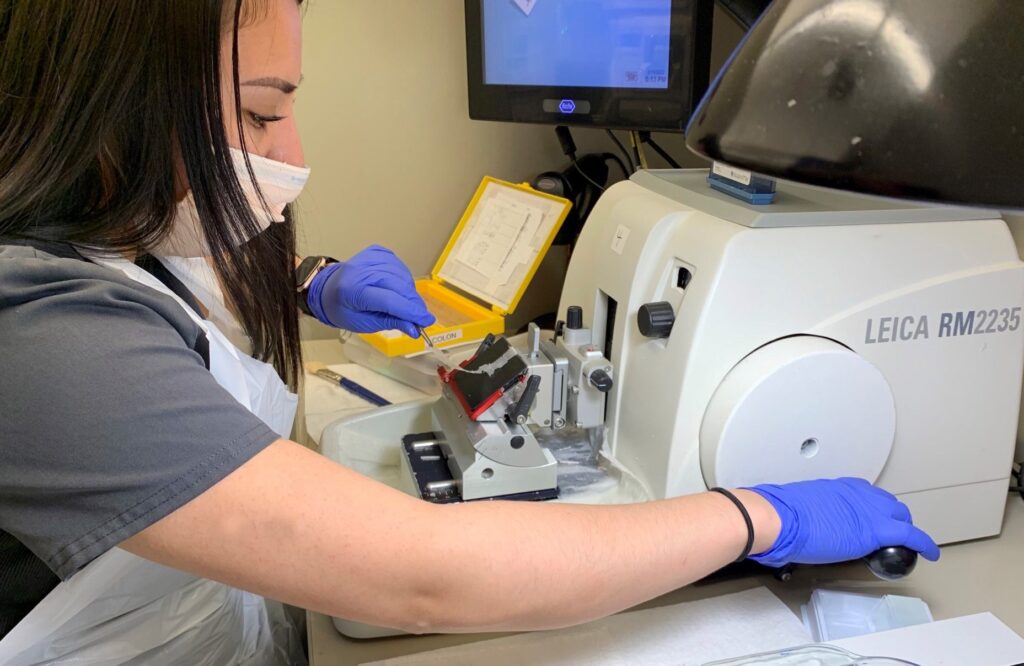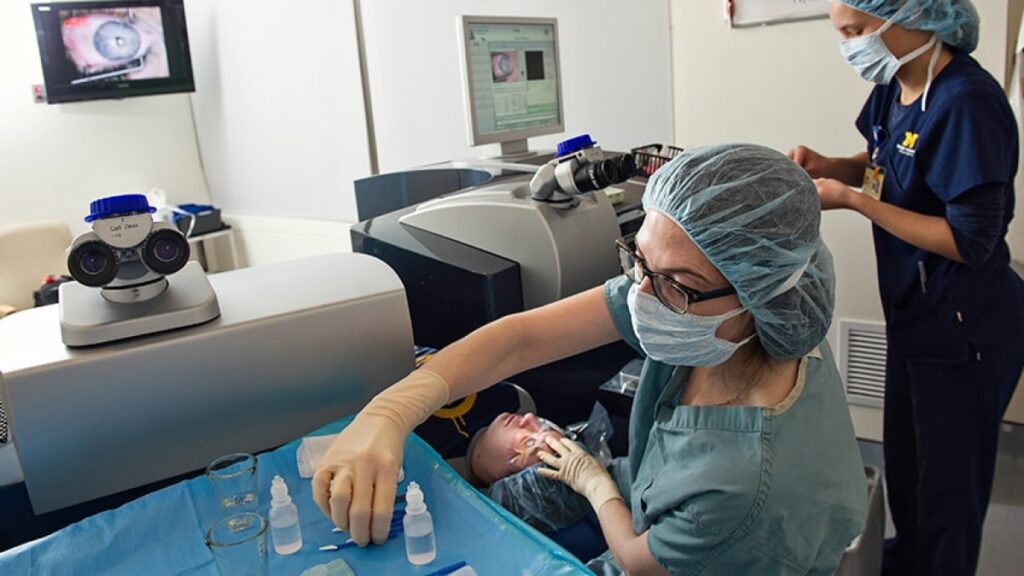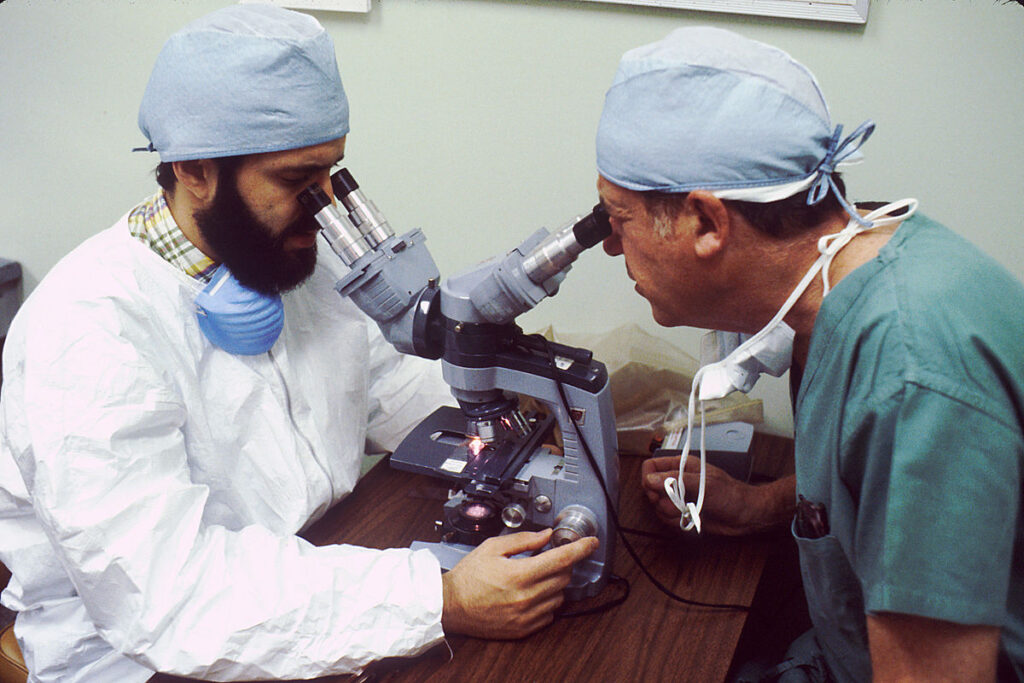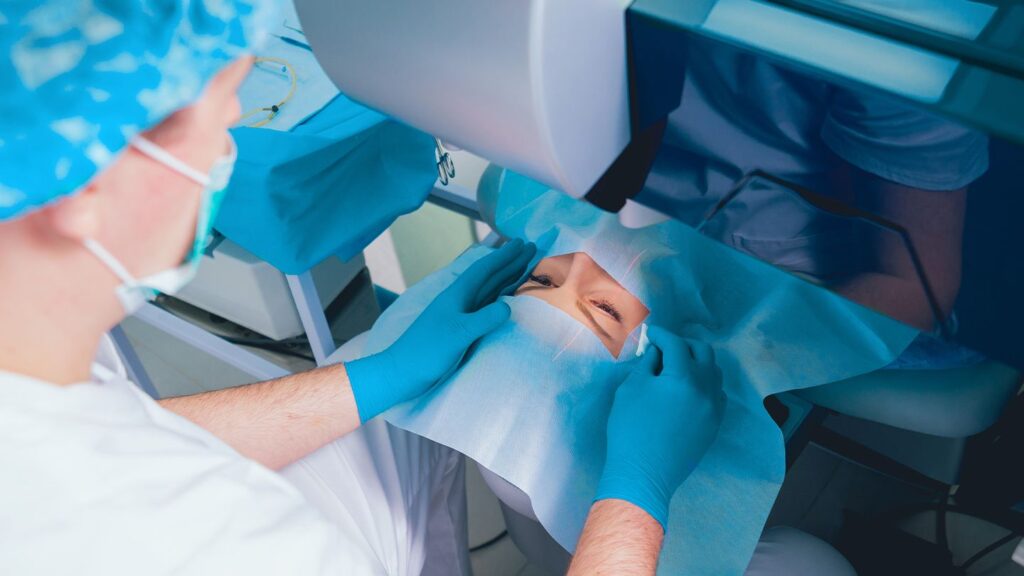Glaucoma is a serious eye condition that affects millions of people worldwide. It is often referred to as “the silent thief of sight” because it can cause irreversible vision loss without any warning signs. Thankfully, glaucoma surgery has emerged as a critical treatment option in preserving vision for those diagnosed with this condition.
Understanding Glaucoma: A Brief Overview
Before we delve into the role of glaucoma surgery, let’s first understand what glaucoma is and how much does glaucoma surgery cost in Australia. Glaucoma is a group of eye diseases that damages the optic nerve, which connects the eye to the brain. This damage is often caused by abnormally high pressure within the eye, known as intraocular pressure (IOP).
Glaucoma affects millions of people worldwide and is one of the leading causes of blindness. It is a chronic condition that requires ongoing management and treatment to preserve vision.
When it comes to glaucoma, early detection is crucial. Regular eye exams, including measuring intraocular pressure and assessing the optic nerve, can help identify the condition in its early stages. This allows for timely intervention and the implementation of appropriate treatment strategies.
The Causes and Symptoms of Glaucoma
Glaucoma can be attributed to various factors, including genetics, age, and other underlying health conditions. While there are different types of glaucoma, the most common form is primary open-angle glaucoma.
Primary open-angle glaucoma develops gradually and is often asymptomatic in its early stages. This makes it challenging to detect without regular eye examinations. As the condition progresses, individuals may experience peripheral vision loss, tunnel vision, eye pain, blurred vision, and even complete vision loss if left untreated.

It is important to note that glaucoma can affect people of all ages, although it is more common in individuals over the age of 60. Additionally, individuals with a family history of glaucoma are at a higher risk of developing the condition.
See Also: Understanding the Importance of ResMed Masks
The Impact of Glaucoma on Vision
Glaucoma can have a devastating impact on one’s vision, gradually impairing the ability to see clearly and perform daily activities. The damage to the optic nerve caused by glaucoma is irreversible, making early detection and treatment vital in preventing further vision loss.
As glaucoma progresses, it can lead to significant visual field loss, affecting both central and peripheral vision. This can make it challenging to navigate the world and perform tasks that were once effortless.
Living with glaucoma requires ongoing management and lifestyle adjustments to optimize visual function and maintain independence. This may include regular use of prescribed eye drops, monitoring intraocular pressure, and making modifications to the living environment to enhance safety and accessibility.
It is important for individuals with glaucoma to work closely with their ophthalmologist or eye care professional to develop a personalized treatment plan. This may involve a combination of medications, laser therapy, and in some cases, glaucoma surgery.
Glaucoma surgery aims to lower intraocular pressure and slow down the progression of the disease. There are different surgical techniques available, including trabeculectomy, tube shunt surgery, and minimally invasive glaucoma surgery (MIGS).
While glaucoma surgery can be effective in managing the condition, it is not a cure. Regular follow-up appointments and ongoing monitoring are necessary to ensure the surgical intervention is successful and to make any necessary adjustments to the treatment plan.
In conclusion, glaucoma is a complex eye disease that requires comprehensive understanding and management. By raising awareness about glaucoma and its impact on vision, we can encourage early detection, timely treatment, and improved quality of life for individuals living with this condition.
The Importance of Early Detection and Treatment
Early detection and timely treatment are crucial in managing glaucoma and preventing vision loss. Glaucoma is a progressive eye disease that damages the optic nerve, leading to irreversible vision loss if left untreated. It is often referred to as the “silent thief of sight” because it can develop slowly and without noticeable symptoms in its early stages.
Regular glaucoma screenings are essential, especially for individuals at higher risk, such as those with a family history of the condition or individuals over the age of 60. By detecting glaucoma early, treatment options can be explored to slow down or halt the progression of the disease, preserving vision and maintaining a good quality of life.
Glaucoma Screening: What to Expect
During a glaucoma screening, your eye doctor will perform a series of tests to assess your eye health and detect any signs of glaucoma. One of the primary tests is measuring your intraocular pressure (IOP), which is the fluid pressure inside your eyes. Elevated IOP is a significant risk factor for glaucoma, as it can put pressure on the optic nerve and cause damage.

In addition to measuring IOP, your eye doctor will examine the optic nerve, which is responsible for transmitting visual information from the eye to the brain. They will carefully evaluate the appearance of the optic nerve head, looking for any signs of damage or abnormalities that may indicate glaucoma.
Another crucial aspect of a glaucoma screening is assessing your visual field, which refers to your peripheral vision. Glaucoma can cause gradual peripheral vision loss, so your eye doctor will conduct tests to determine if any visual field defects are present. This can be done using specialized equipment that measures your ability to detect lights or objects in different areas of your visual field.
Overall, the glaucoma screening process is painless, non-invasive, and typically performed during a routine eye exam. It is an essential step in detecting glaucoma early and initiating appropriate treatment to prevent further vision loss.
The Role of Regular Eye Exams
Regular eye exams are crucial in detecting glaucoma early on and monitoring its progression over time. Even if you do not have any symptoms or risk factors for glaucoma, it is still important to have regular eye exams to ensure the health of your eyes.
During a comprehensive eye exam, your eye doctor will not only screen for glaucoma but also evaluate your overall eye health. They will check for any signs of other eye conditions or diseases that may impact your vision, such as cataracts or macular degeneration.
If you have been diagnosed with glaucoma, regular eye exams become even more critical. Your eye doctor will closely monitor your eye health, including measuring your intraocular pressure, assessing the optic nerve, and evaluating your visual field. These measurements will help determine the effectiveness of your current treatment plan and whether any adjustments need to be made.
Additionally, regular eye exams provide an opportunity for you to discuss any concerns or changes in your vision with your eye doctor. They can address any questions you may have and provide guidance on how to best manage your glaucoma and maintain optimal eye health.
In conclusion, early detection and treatment of glaucoma are vital in preserving vision and preventing further vision loss. By attending regular eye exams and undergoing glaucoma screenings, individuals can take proactive steps in managing their eye health and ensuring the best possible outcomes for their vision.
Different Types of Glaucoma Surgeries
When it comes to treating glaucoma, surgery may become necessary to lower intraocular pressure and preserve vision. There are various surgical options available, tailored to the individual’s unique needs.
Glaucoma is a progressive eye disease that damages the optic nerve, leading to vision loss. It is often caused by increased intraocular pressure, which can result from a buildup of fluid in the eye. While medication and lifestyle changes are usually the first line of treatment, surgery may be required if these methods fail to effectively manage the condition.
Trabeculectomy: A Common Glaucoma Surgery
Trabeculectomy is a common surgical procedure performed to create a new drainage channel in the eye, allowing excess fluid to flow out and reduce intraocular pressure. This surgery is typically recommended for individuals with advanced glaucoma.
During a trabeculectomy, a small flap is created in the sclera (the white part of the eye) to create an opening. This opening acts as a new pathway for the fluid to drain out of the eye, bypassing the blocked or damaged drainage system. By creating this new drainage channel, intraocular pressure is lowered, helping to preserve vision and prevent further damage to the optic nerve.
The success rate of trabeculectomy varies depending on the individual and the severity of their glaucoma. While the procedure can effectively lower intraocular pressure, there are potential risks and complications, such as infection, bleeding, or scarring. Close monitoring and follow-up care are crucial to ensure the best possible outcome.

Laser Trabeculoplasty: A Non-Invasive Option
Laser trabeculoplasty is a less invasive surgical option that utilizes laser energy to open up the eye’s drainage system, promoting better fluid flow and reducing intraocular pressure. This procedure is often performed when medication fails to effectively control intraocular pressure.
During laser trabeculoplasty, a laser is used to target and treat specific areas of the trabecular meshwork, which is responsible for draining fluid from the eye. The laser energy stimulates the cells in the meshwork, improving their function and allowing for better fluid drainage. This helps to lower intraocular pressure and prevent further damage to the optic nerve.
One of the advantages of laser trabeculoplasty is that it can be performed as an outpatient procedure, meaning patients can typically go home the same day. The recovery time is also relatively short compared to other glaucoma surgeries. However, it is important to note that the effects of laser trabeculoplasty may not be permanent, and additional treatments or procedures may be necessary in the future.
It is important for individuals with glaucoma to work closely with their ophthalmologist to determine the most appropriate surgical option based on their specific needs and the stage of their glaucoma. Regular eye examinations and follow-up appointments are essential to monitor the progression of the disease and ensure that the chosen surgical intervention is effective in managing intraocular pressure and preserving vision.
The Effectiveness of Glaucoma Surgery
Glaucoma surgery plays a vital role in slowing down the progression of the condition and preserving vision in those with glaucoma. By effectively lowering intraocular pressure, surgery helps prevent further damage to the optic nerve and minimize the risk of vision loss.
How Surgery Helps in Slowing Vision Loss
By creating alternative pathways for fluid drainage or improving the existing drainage system, glaucoma surgery helps maintain optimal intraocular pressure levels. This, in turn, reduces the strain on the optic nerve and decreases the likelihood of vision deterioration.
Risks and Complications Associated with Glaucoma Surgery
As with any surgical procedure, glaucoma surgery carries some risks and potential complications. These may include infection, excessive bleeding, inflammation, elevated intraocular pressure, and temporary or permanent vision changes. However, with proper pre- and post-operative care, these risks can be minimized.
Life After Glaucoma Surgery
After undergoing glaucoma surgery, it is crucial to follow the recommended post-surgery care instructions to ensure optimal healing and long-term success.
Post-Surgery Care and Maintenance
Post-surgery care typically involves regular follow-up visits with your eye doctor, the use of prescribed eye drops, and avoiding any strenuous activities that may increase intraocular pressure. Adhering to the prescribed medication regimen and attending scheduled appointments are essential steps for a successful recovery.
Long-Term Outlook and Quality of Life Improvement
Glaucoma surgery has been shown to effectively preserve vision and improve the overall quality of life for individuals with glaucoma. By reducing intraocular pressure and preventing further vision loss, surgery offers new hope for those living with this potentially debilitating condition.
In conclusion, glaucoma surgery plays a crucial role in preserving vision for individuals affected by this sight-threatening condition. Early detection, regular eye exams, and timely intervention are key in managing glaucoma and preventing irreversible vision loss. By understanding the causes, symptoms, and impact of glaucoma, individuals can take proactive measures to protect their sight and enjoy a better quality of life.

